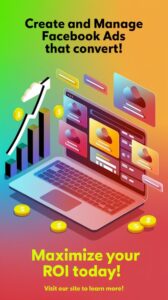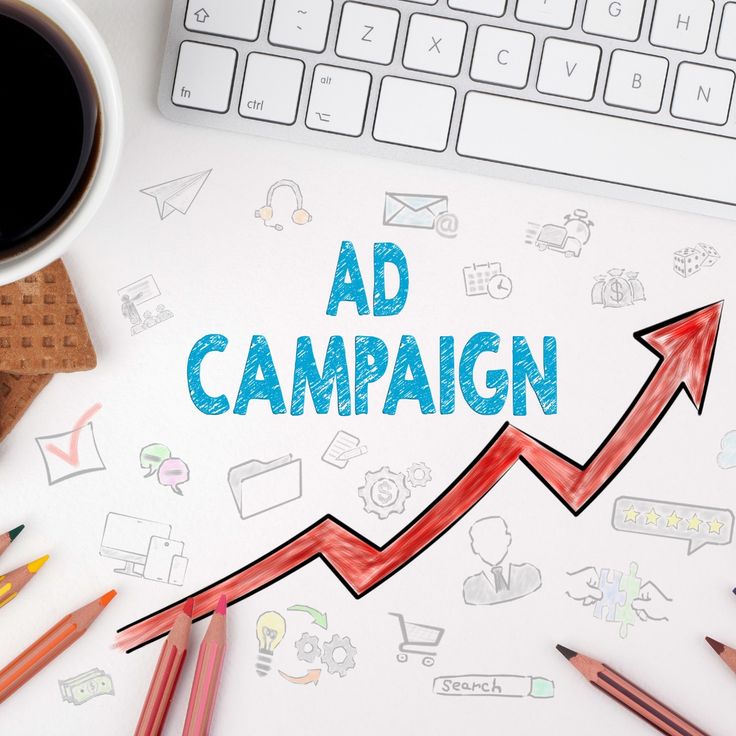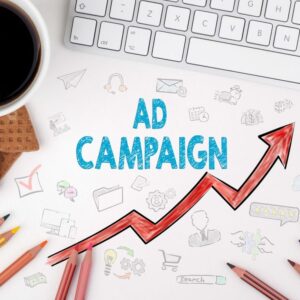How to Create Highly Targeted Ad Copies
A Comprehensive Guide:-
Creating highly targeted ad copies is a crucial element of any successful advertising campaign. Whether you are advertising on Google, Facebook, Instagram, LinkedIn, or other platforms, the ability to craft ad copies that speak directly to your target audience can significantly impact your ad performance. When you communicate the right message to the right people, your ad not only resonates with your audience but also drives conversions and builds long-term customer loyalty.
In this blog post, we will dive into the process of creating highly targeted ad copies that not only attract attention but also drive tangible results. We will cover everything from audience segmentation to crafting compelling headlines, writing persuasive body text, and optimizing your call-to-action (CTA). By the end of this post, you’ll have a detailed, actionable framework for creating effective, results-driven ad copies for any advertising platform.
Table of Contents: 
- The Importance of Highly Targeted Ad Copies
- Understanding Your Audience
- The Psychology Behind Effective Ad Copywriting
- Audience Segmentation: How to Tailor Your Message
- Crafting Attention-Grabbing Headlines
- Writing Persuasive Body Text for Your Ads
- Optimizing Your Call-to-Action (CTA)
- A/B Testing Your Ad Copies for Maximum Effectiveness
- Ad Copy Best Practices for Different Platforms
- Common Mistakes to Avoid in Ad Copywriting
- Real-Life Examples of Highly Targeted Ad Copies
- Conclusion: Mastering Highly Targeted Ad Copies for Success
1. The Importance of Highly Targeted Ad Copies
In the digital age, the sheer volume of advertisements a person encounters daily is overwhelming. According to some studies, consumers are exposed to between 4,000 and 10,000 ads daily, whether on social media, search engines, websites, or mobile apps. With such saturation, standing out is essential.
Highly targeted ad copies have the power to cut through the noise. By delivering a message that directly addresses the needs, desires, and pain points of your target audience, you increase the likelihood of engagement and conversions. Targeting helps ensure that your ad resonates with the right people at the right time.
Why Targeted Ad Copy Matters:
- Increases Relevance: When the ad copy directly aligns with the audience’s interests and needs, it feels less like an advertisement and more like a solution.
- Improves Conversion Rates: Highly relevant ads are more likely to convert because they address the audience’s specific desires or pain points.
- Maximizes ROI: By targeting the right audience, you ensure your ad budget is spent efficiently, minimizing waste on people who aren’t likely to convert.
- Builds Brand Trust: When people see ads that speak directly to their needs, it creates a sense of authenticity, which can foster trust in the brand.
2. Understanding Your Audience
Before you can create highly targeted ad copies, it’s essential to first understand who your audience is. Without this understanding, even the most well-crafted ad copy will fall flat. Knowing your audience allows you to speak their language and create a message that resonates with them.
Steps to Understand Your Audience:
- Develop Buyer Personas: A buyer persona is a semi-fictional representation of your ideal customer. This persona is based on research and real data about your existing customers. A detailed persona includes information like demographics (age, gender, location), psychographics (values, interests, lifestyle), pain points, purchasing behavior, and challenges.
- Conduct Market Research: This can be through surveys, customer interviews, or studying your competitors’ audience. Research will give you insights into the problems your target customers are trying to solve and how they make purchasing decisions.
- Analyze Customer Data: Look at the data you already have from your website, CRM, or social media analytics. These platforms can provide valuable insights into the types of people interacting with your brand.
- Use Social Listening: Social listening tools allow you to track conversations about your industry, competitors, and your brand. This helps you understand what your audience is saying and what they care about.
By understanding your audience in detail, you will be able to craft an ad copy that is perfectly aligned with their needs and motivations.
3. The Psychology Behind Effective Ad Copywriting
Ad copywriting is both an art and a science. Crafting a message that resonates deeply with your target audience requires understanding the psychological triggers that compel people to take action.
Key Psychological Triggers in Ad Copywriting:
- Fear of Missing Out (FOMO): People hate to feel left out, and ads that tap into this fear can be highly effective. For example, “Limited time offer” or “Only a few spots left” create a sense of urgency that pushes people to act quickly.
- Social Proof: Consumers are more likely to trust a product or service if they see that others are using it. Testimonials, user-generated content, reviews, and influencer endorsements all serve as social proof.
- Reciprocity: When you offer something for free (a discount, valuable content, a sample), people often feel compelled to reciprocate. This can be a great way to get potential customers to take action, such as making a purchase.
- Scarcity: When something is perceived as scarce or in limited supply, people are more likely to take action. This is particularly effective in e-commerce and event promotions.
- Authority: People trust experts. If your brand is known for its expertise in a field, use that to your advantage in your ad copy by positioning your brand as an authority.
- Emotion: Emotions drive action. Ads that elicit emotions such as happiness, excitement, or even frustration tend to be more memorable and effective in driving conversions.
4. Audience Segmentation: How to Tailor Your Message
Audience segmentation is the process of dividing a broad target audience into smaller, more specific groups based on shared characteristics. The goal is to create tailored messages for each segment to increase the relevance and effectiveness of your ads.
Common Segmentation Criteria:
- Demographics: Age, gender, location, income, education level, etc.
- Behavioral: Purchase history, product usage, website activity, etc.
- Psychographics: Lifestyle, values, interests, attitudes.
- Technographics: Devices used, software preferences, browsing habits.
- Customer Journey Stage: Prospects, leads, or existing customers.
By segmenting your audience, you can create customized ad copies that speak directly to the specific needs and motivations of each group. For example, an ad targeting new users may emphasize product education, while an ad for repeat customers may offer exclusive deals or loyalty rewards.
Tools for Audience Segmentation:
- Facebook Ads Manager: Allows you to create custom audiences based on interests, behaviors, and demographics.
- Google Analytics: Offers detailed insights into your website’s visitors, including their demographic and behavioral data.
- CRM Tools: Platforms like HubSpot and Salesforce can help segment your leads and customers by various attributes.
5. Crafting Attention-Grabbing Headlines 
Your headline is the first thing people will see, and it plays a critical role in determining whether they will read further. A great headline grabs attention, piques curiosity, and makes people want to learn more.
Tips for Crafting Irresistible Headlines:
- Keep It Concise: Aim for 6–12 words. People often skim headlines, so the message should be clear and to the point.
- Use Power Words: Words like “free,” “exclusive,” “proven,” “limited,” and “ultimate” are emotionally charged and often lead to higher engagement.
- Ask Questions: A question-based headline can spark curiosity. For example, “Want to boost your sales by 30% in 3 months?”
- Incorporate Numbers: Numbers provide specificity and make the offer feel more tangible. “5 Ways to Improve Your SEO Today” is more compelling than “How to Improve Your SEO.”
- Highlight Benefits, Not Features: Focus on what the customer will gain, rather than what your product or service does. For instance, instead of “High-Quality Headphones,” try “Hear Every Detail with Crystal Clear Sound.”
- Create Urgency: Phrases like “Act Now,” “Limited Time,” and “Last Chance” create urgency and push readers to act quickly.
6. Writing Persuasive Body Text for Your Ads
The body of your ad is where you expand on your headline and explain why the audience should care about your offer. The key to persuasive ad copy is to focus on benefits and speak directly to the emotions and pain points of your target audience.
Steps for Writing Persuasive Ad Body Copy:
- Address Pain Points: Start by identifying the specific problems your audience is facing. Then, show how your product or service can solve them.
- Focus on Benefits: Instead of listing features, highlight the benefits your audience will experience. For example, “Save time and increase productivity” is more compelling than “Has 10-hour battery life.”
- Use Social Proof: Include testimonials, reviews, or statistics that prove your product works. For example, “Join over 100,000 satisfied customers.”
- Appeal to Emotions: Tap into the emotions of your audience, whether it’s desire, fear, excitement, or relief. Make them feel something.
- Be Clear and Direct: Avoid jargon or overcomplicated language. Your message should be simple and easy to understand, especially for users who may only glance at your ad.
7. Optimizing Your Call-to-Action (CTA)
The CTA is the most crucial element of your ad copy—it’s where you direct your audience to take the next step. Whether it’s to buy now, sign up, download, or learn more, a well-crafted CTA can dramatically impact conversion rates.
Tips for Writing Effective CTAs:
- Use Action Verbs: Phrases like “Download Now,” “Get Started,” “Learn More,” or “Claim Your Discount” encourage users to take immediate action.
- Create Urgency: Phrases like “Limited Time” or “Only X Left” push people to act quickly.
- Be Clear About What Happens Next: Let users know what they can expect when they click the CTA. For example, “Get Your Free Trial Today” tells the audience exactly what they’ll get.
- Make It Stand Out: Ensure your CTA is visually distinct from the rest of your ad. Use contrasting colors, larger fonts, or buttons to make it easy for users to spot.
8. A/B Testing Your Ad Copies for Maximum Effectiveness
One of the best ways to ensure your ad copy is highly targeted is by constantly testing and optimizing. A/B testing (or split testing) allows you to compare two versions of an ad to determine which performs better.
What to Test in Your Ad Copies:
- Headlines: Try different variations of your headline to see which one catches attention best.
- CTA: Test different wording, colors, and placements of your CTA button.
- Images/Visuals: Test whether certain visuals resonate better with your audience (e.g., product images vs. lifestyle images).
- Ad Copy Length: Test whether a short and snappy message performs better than a longer, more detailed one.
9. Ad Copy Best Practices for Different Platforms 
Each platform has its unique style, audience, and format. Understanding the nuances of each platform is essential for crafting effective, targeted ad copies.
- Facebook and Instagram Ads: Visuals are crucial. Short, attention-grabbing text paired with high-quality images or videos performs best.
- Google Ads: Focus on keywords and intent. Your ad copy should directly align with the user’s search query and offer a clear solution.
- LinkedIn Ads: Professional and informative tones work best. Target business professionals with specific pain points and solutions.
- Twitter Ads: Keep your message brief and punchy. Use hashtags to increase visibility.
10. Common Mistakes to Avoid in Ad Copywriting
- Overcomplicating the Message: Keep your copy simple and easy to understand.
- Neglecting the Audience’s Needs: Always write with your audience’s problems and desires in mind.
- Weak or Vague CTAs: Be clear and direct about what action you want the audience to take.
- Ignoring Testing: Don’t settle for the first draft. Regularly test and optimize your ad copy for the best results.
11. Real-Life Examples of Highly Targeted Ad Copies
Example 1: Shopify
- Headline: “Start Your Online Store Today”
- Body Copy: “Create your store in minutes and start selling today. No technical skills required.”
- CTA: “Get Started Free”
This ad targets entrepreneurs looking to start their own online store and emphasizes the ease of use and quick setup.
Example 2: Grammarly
- Headline: “Write Like a Pro with Grammarly”
- Body Copy: “Make your writing clearer, more concise, and error-free with real-time suggestions.”
- CTA: “Try It for Free”
This ad targets individuals looking to improve their writing and emphasizes the ease and value of using Grammarly.
12. Conclusion: Mastering Highly Targeted Ad Copies for Success
Creating highly targeted ad copies is both an art and a science. By understanding your audience, crafting compelling headlines and body text, optimizing CTAs, and testing for effectiveness, you can dramatically improve the performance of your ad campaigns. The more closely your ad copy aligns with your audience’s needs and emotions, the more likely it is to drive results. Keep testing, learning, and refining your approach, and soon you’ll master the art of creating high-performing, targeted ad copies that deliver real value.









Post Comment